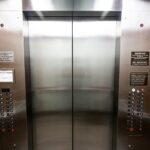Unexpected traction elevator downtime is more than just an inconvenience; it can disrupt daily routines and possibly lead to financial hiccups, especially when there are pressing deadlines or crucial meetings. For both residential and commercial buildings, the reliability of an elevator is significant. Imagine being in a high-rise building and suddenly finding the elevator out of order during morning rush hour—this turns simple commutes into a frustrating experience. Whether you’re running a business or managing an apartment complex, handling these unexpected situations efficiently ensures smoother operations and satisfied occupants.
Instead of waiting for problems to arise, understanding how to manage potential downtimes can be incredibly helpful. Knowing why these downtimes happen gives insight into preventing them. It allows building managers to make informed decisions and reduce disruptions, ensuring a smoother elevator experience.
Understanding the Causes of Downtime
Traction elevator downtimes don’t just appear out of nowhere. Various factors can contribute to these disruptions. Here are a few common reasons:
– Wear and Tear: Like any other mechanical device, elevators experience wear and tear. Over time, components like cables, sheaves, and motors may wear down, leading to unexpected stops.
– Power Outages: Sudden power outages can result in elevator interruptions, especially in areas with unstable electricity supply.
– Environmental Factors: Changes in weather, such as high humidity or extremely low temperatures, can affect elevator components. For instance, cold weather might cause lubricants in elevator systems to thicken, impacting their movement.
– Usage Patterns: The frequency and manner in which elevators are used can affect their longevity. High traffic during peak hours can strain the system, leading to parts wearing out faster than expected.
Understanding these causes helps in mitigating downtime. If managers know that a building is often exposed to power outages, investing in a backup generator could be a proactive step. Similarly, regular checks during certain weather conditions can help in catching potential problems early.
Immediate Steps to Take When Downtime Occurs
When an elevator suddenly stops working, quick action is required to minimize the impact. Here are immediate steps to take:
1. Ensure Safety: First and foremost, ensure that no passengers are stuck inside. If they are, remain calm and reassure them while waiting for professional help.
2. Inform Occupants: Quickly notify others in the building about the downtime to prevent further attempts to use the elevator.
3. Contact Maintenance: Reach out to your elevator maintenance service immediately. The faster they know about the issue, the quicker they can address it.
4. Limit Access: Put up signs or barriers around the out-of-service elevator to prevent accidents and inform people to use stairs or other elevators in the building.
Having a plan in place for elevator downtimes can save time and prevent added frustration for everyone using the building. By understanding the causes and preparing for immediate response, you help create a safer and more efficient environment, even in the face of unexpected challenges.
The Role of Regular Maintenance in Preventing Downtime
Regular maintenance is the key to keeping elevators running smoothly. When elevators receive consistent attention, the chances of sudden breakdowns diminish significantly. Routine checks can identify small issues before they become big problems, much like checking the oil in a car to prevent engine trouble. This proactive approach benefits both residential buildings and commercial spaces.
Maintenance involves scheduled inspections of crucial components such as cables, brakes, and control systems. During these checks, technicians can lubricate moving parts, tighten any loose connections, and ensure that all safety systems are in top-notch condition. This not only helps in avoiding sudden stoppages but also prolongs the lifespan of the elevator, saving building owners money over time.
In addition, partnering with professional elevator maintenance services brings peace of mind. These experts bring years of experience and knowledge, ensuring that every part of your elevator is working as it should. They can recommend the best practices tailored to your elevator system, contributing further to a worry-free experience.
Long-term Strategies to Reduce Downtime
Implementing long-term strategies can also greatly reduce unexpected elevator downtimes. Here’s how you can plan for improved elevator reliability:
1. Proactive Maintenance Schedule: Establish a consistent maintenance schedule that allows for regular inspections and tune-ups. This keeps parts in optimal condition and identifies potential issues early.
2. Upgrade Systems: Consider upgrading outdated components. Modern elevators come with technology that improves efficiency and reduces the likelihood of breakdowns.
3. Invest in Reliable Components: Use high-quality parts known for durability. While it might be tempting to opt for cheaper alternatives, reliable components often lead to fewer repairs down the line.
4. Emergency Preparedness: Train staff or residents on what to do during an elevator failure. Having a clear plan can reduce panic and ensure quick actions when issues arise.
By enacting these strategies, buildings can enhance their elevator functionality and provide a more reliable service for their occupants.
Wrapping Up Your Downtime Management Plan
Downtime isn’t just a minor hiccup; it’s a disruption that can affect the rhythm of daily life and business. However, with the right strategies in place, it becomes manageable. Through understanding causes, taking immediate steps, incorporating regular maintenance, and planning long-term improvements, you create a strong foundation for elevator reliability.
Preparation goes a long way. By staying ahead of potential issues, buildings can continue to offer smooth and efficient elevator rides. Keeping these practices in mind ensures not only the safety of everyone who relies on elevators but also the smooth operation of your building’s daily activities.
For effective management of unexpected elevator issues, consider reliable solutions tailored to your building’s needs. Kaiser Elevators is committed to providing top-notch care and expertise, ensuring your systems operate seamlessly. To keep your elevators in peak condition, explore our comprehensive elevator repair services today.

